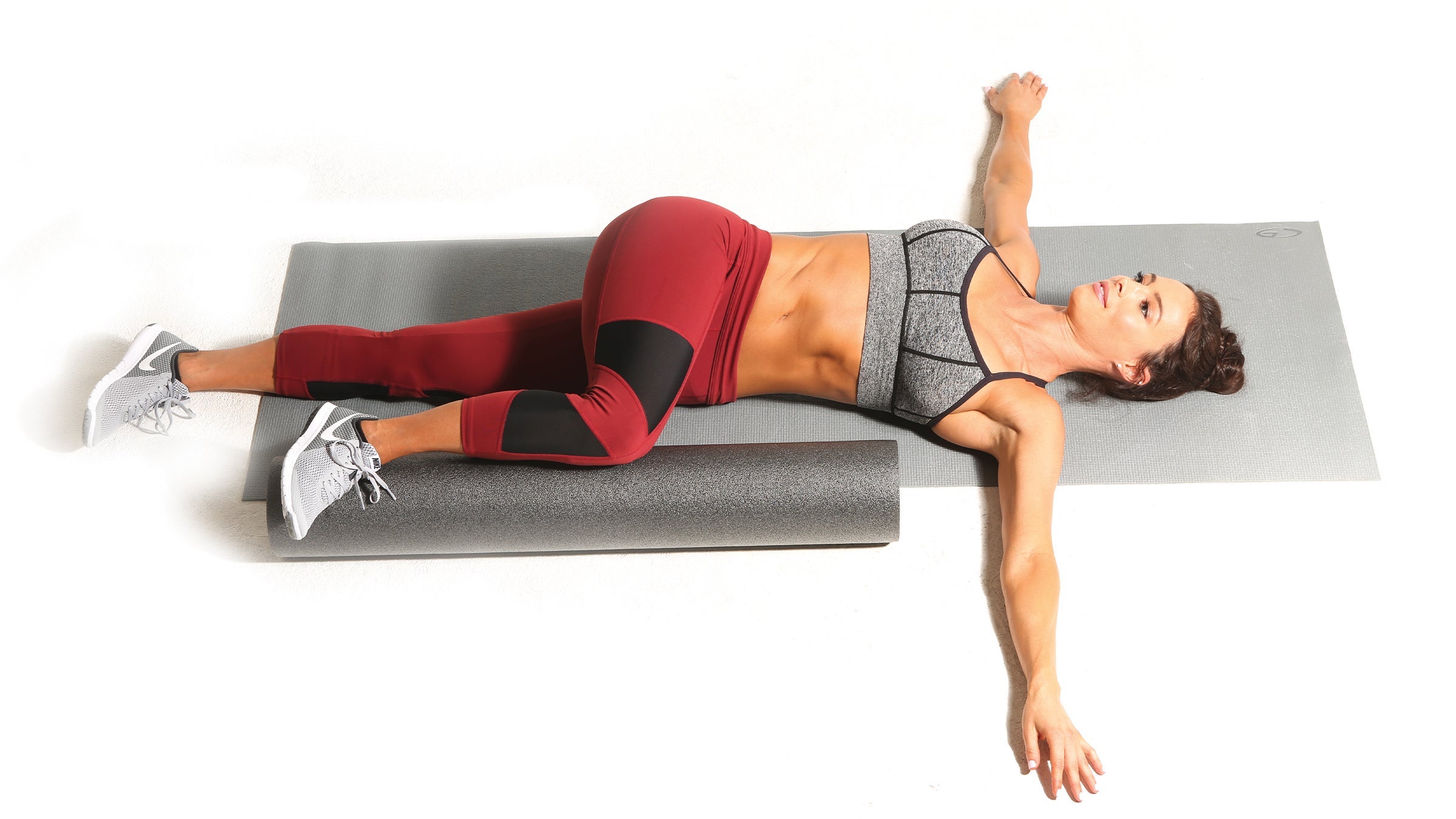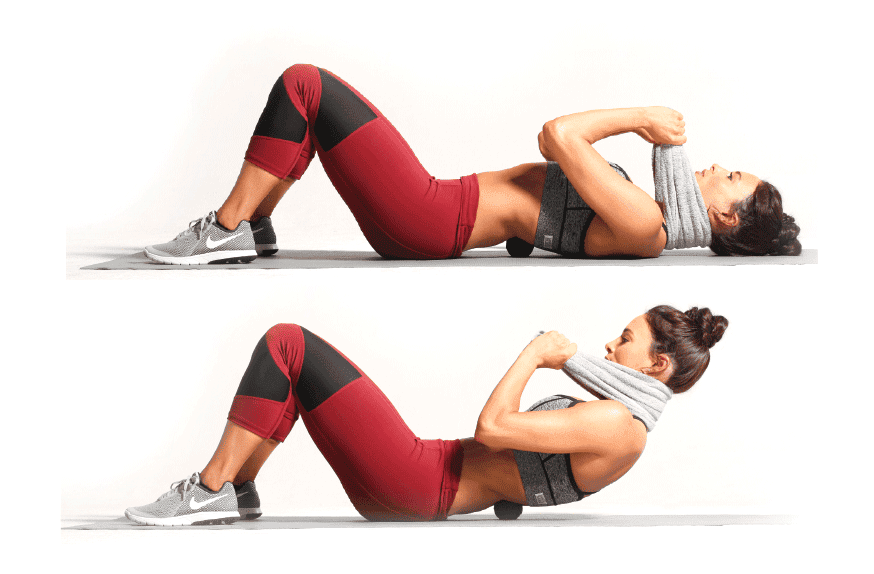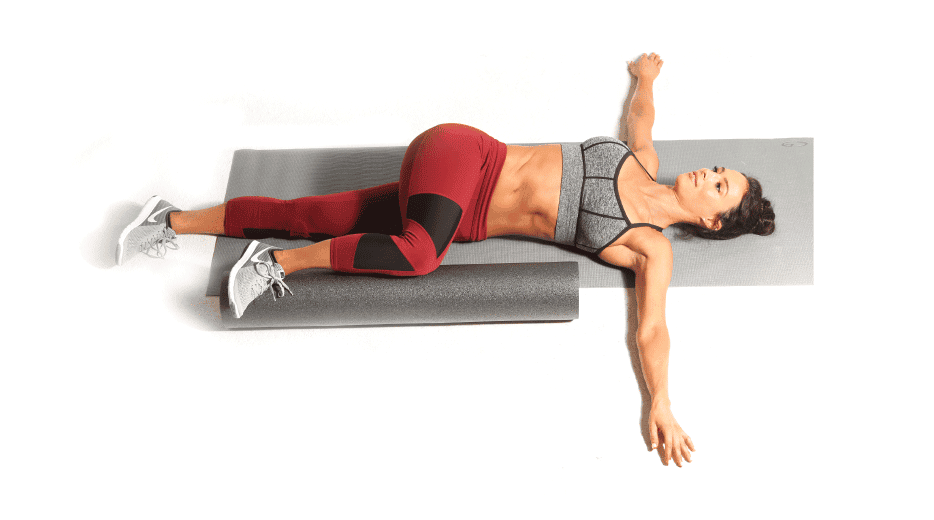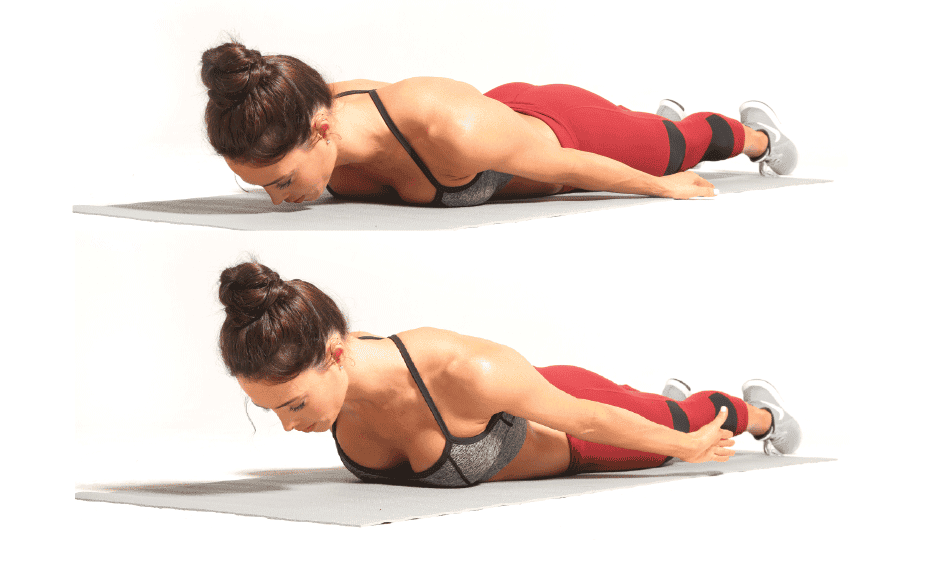If you buy through our links, we may earn an affiliate commission. This supports our mission to get more people active and outside.Learn about Outside Online's affiliate link policy
4 Mobility Exercises to Improve Upper-Back Pain

Because it tends to be so achy-breaky, your lumbar area usually hogs all the spinal glory. But the thoracic spine (T-spine) is an important link in the chain and is perhaps the most disregarded area for mobility. Stiffness and lack of extensibility in the soft tissue surrounding the T-spine can cause shoulder strain (ever heard of swimmer’s shoulder?) and promote compression of the nerve roots, leading o pain and numbness in your shoulders, neck, and fingers.
If you’re doing a lot of chest presses, crunches or lat pulldowns in the gym this winter, you could be tight in your pecs, lats, and shoulders. This can affect your overhead position when performing moves like pull-ups and overhead squats because the upper back can’t extend to align the arms overhead. It can even make basic training moves, like swinging your arms when running or riding your bike in aero position – deeply uncomfortable.
The following moves are designed to release and retrain your T-spine to extend and rotate freely, correcting posture, decreasing pain and injury potential, and improving your workout results. Do these moves before an upper-body workout or after any long period of flexion — and hit the reset button on your back.
RELATED: Ask a Trainer: How Can I Prevent Low-Back Pain from Training?
Mobility exercises to relieve pain in the upper back, neck, and shoulders
Segmental flexion/extension with the peanut

Make your own peanut by taping two tennis or lacrosse balls together, or purchase one on Amazon.
Lie face up with your knees bent, feet on the floor. Place the peanut between the floor and your midback just below your rib cage. Loop a towel behind your head and hold an end in each hand to support your head and neck. Start in neutral alignment, then inhale as you slowly lower your shoulders to the ground. Exhale and perform a small crunch, rounding the upper back as you lift. Repeat for two to three slow repetitions, then move the peanut up to the next vertebra. Continue until you reach the base of your neck (T1).
Tip: To release the deeper back muscles like the rhomboids and erector spinae, pinch your elbows together to pull the scapulae apart, allowing for a more concentrated stretch.
Iron cross

Lie faceup with a foam roller along your left side. Bend your right hip and knee to 90 degrees, then cross your knee over your body and rest it on top of the roller. Inhale, then exhale and press your right shoulder blade into the ground, aiming to rotate your T-spine rather than stretching your chest. Hold for three to five seconds, then release. Repeat four times, then switch sides.
Tip: If you can easily get your shoulder blade to the ground, add dynamic mobility by sweeping your arm up overhead and back again, keeping it in contact with the ground.
Thread the needle

Get on all fours with your hands under your shoulders and your knees under your hips, spine neutral. Keep your hips square as you reach your right arm underneath you as far as possible, and rest your right shoulder on the ground. Hold for 30 seconds, then repeat on the opposite side. Do one to two sets of four to five reps on each side.
Tip: Make this stretch more dynamic by adding rotation: After threading the needle, rotate the opposite direction and extend your arm straight toward the ceiling. Repeat for five to six slow reps on each side.
Prone cobra

Lie facedown with your arms at your sides, spine neutral. Brace your abs and press them into the floor, then externally rotate your arms so your thumbs point upward, palms facing away. Draw your shoulder blades down and back and lift your arms to raise your upper body off the floor slightly, keeping your chin tucked and your lower body anchored. Hold for two to three seconds, then return to the floor. Do one to two sets of eight to 10 reps.
Tip: Focus the movement at your shoulder blades to do the lift to prevent compensation at the lower back and hips.
T-Spine talk
The large, bony protrusion at the base of your neck marks the first of 12 vertebrae in the thoracic region (T1-T12). This area creates a concave curvature in the upper back. It connects your neck and lower back, supports your rib cage, and works with your shoulder blades to stabilize to the upper body and coordinate complex movements.
RELATED: 4 Ways to Decrease Lower Back Pain After a Bike Ride